10 Day itinerary in Bulgaria, Europe
Legends, Archaeology Treasures and Traditions of Bulgaria
According to the statistics, Bulgaria ranks third after Greece and Italy for the number of its archaeological monuments. During the tour, you will visit UNESCO-listed sites, fortresses, monasteries. You will see Humankind`s oldest gold objects excavated near Varna, the Neolithic Dwellings museum – o... Read More

By Maya
Overview
Physical Difficulty
Easy
Recommended Age
Everyone
Operated in
English
GUIDANCE
Tour Guide
starting point
Sofia
trip type
Private
trip attributes
Rural home stays
Indigenous culture
Meet local people
Visit markets
Culture & Heritage
Food & Culinary

Night
Highlights
Visit UNESCO sites - Sveshrati Thracian tomb, Old Nessebur, Kazanluk Thracian tomb, Rila Monastery
Explore the oldest golden objects discovered on the Earth
Visit the Valley of Roses, Black Sea coast, the unspoilt nature of the Balkan mountains, Rila and t
Enjoy traditional Bulgarian dishes, local wines and folklore
Visit UNESCO sites - Sveshrati Thracian tomb, Old Nessebur, Kazanluk Thracian tomb, Rila Monastery
Explore the oldest golden objects discovered on the Earth
Visit the Valley of Roses, Black Sea coast, the unspoilt nature of the Balkan mountains, Rila and t
Enjoy traditional Bulgarian dishes, local wines and folklore
Itinerary
Mid-Range Accommodation
Accommodation Categories
Day 1
Arrival Sofia
Arrive at Sofia Airport and meet your guide. Panorama tour of the capital city of Bulgaria, which Constantine the Great once called “My Rome”. Sofia was originally a Thracian settlement called Serdica, named after the Thracian tribe Serdi that had populated it. Around 500 BC another tribe settled in the region, the Odrysi, known as an ethnos with their own kingdom. The panorama tour will include Alexander Nevski Memorial Cathedral, Parliament Square, National Theatre, former Royal Palace, St. George 4th c Rotunda ( the oldest preserved building of Sofia ), the ruins of Ancient Serdica, the Presidency. Check-in at your hotel, overnight.
Meals: Dinner
Accommodation:
- Mid-Range Accommodation: 4* hotel
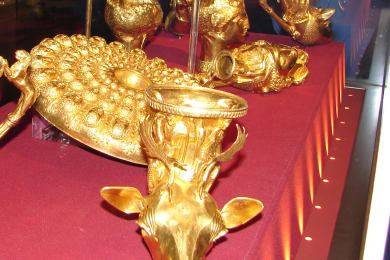
Day 2
Sofia – Rila Monastery – Sofia
Morning visit of the National Museum of History, situated in the former residence of the communist government in Bulgaria, at the foothills of Vitosha mountain. The building itself has a historical significance for nowadays Bulgaria, as it is here that the beginning of the transition period started back on 10th of November 1989 after the resignation of the communist leader Todor Zhivkov. The interior is a cubic structure with a lot of woodcarvings, big windows and open space for receptions. In an area of 6000 square meters, there are over 10 000 artifacts that represent the history of Bulgaria (from the VII millennium B.C. until the mid-XX century). Proceed to Rila Monastery UNESCO site – the largest monastery in Bulgaria, built in the 10th c and picturesquely located 1100 m above sea level in Rila Mountain National Park. Return to Sofia for 2nd night.
Meals: Breakfast, Dinner
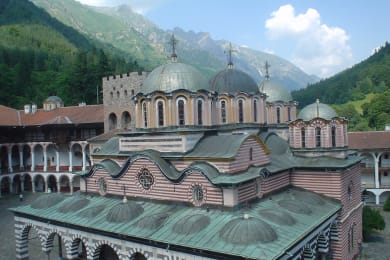
Day 3
Sofia – Veliko Turnovo
Morning visit of the underground museum of St. Sofia 6th c basilica and Arena di Serdica ruins. Departure to Veliko Turnovo – the medieval capital city of Bulgaria, picturesquely located on 4 hills above Yantra river. Panoramic walking tour of the old part of Veliko Turnovo with Gurko Street and Samovodska Charshia – the old marketplace. Visit Tsarevets Royal Hill with the fortress, Patriarh`s complex, and Baldwin tower ( the leader of the 4th Crusade, who was imprisoned here ). Check in at your hotel, dinner and overnight.
Accommodation:
- Mid-Range Accommodation: 4* Hotel

Day 4
Veliko Turnovo – Sboryanovo - Sveshtari – Devnya – Varna/ Golden Sands
Departure to Sboryanovo Archaeological reserve - with an area of about 16000m2, it protects rare creations of nature and one of the greatest concentrations of archaeological sites in the country. The most notable of them belong to the culture of the Thracians - more than 100 tumuli, vast areas surrounded by stone walls, cult places, sanctuaries, and others, dated to the 1st mill.BC, as well as important sites from the Prehistoric, Roman, and the Mediaeval periods. Of course, the most famous of them is the Sveshtari Thracian tomb, included in the UNESCO list. Lunch and proceed to the small town of Devnya, the Old Roman city of Marcianopolis to visit the Mosaics museum. The museum, built on top of a large ruined Roman villa from Late Antiquity, exhibits mosaics from the Roman and early Byzantine city of Marcianopolis, as well as other archaeological artifacts. Transfer to Varna, check-in at the hotel, and overnight.
Meals: Breakfast, Lunch, Dinner
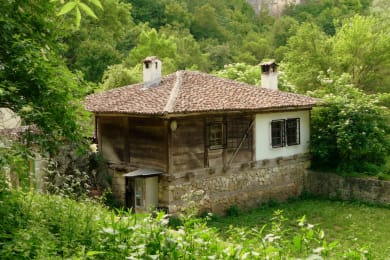
Day 5
Varna / Golden Sands
Day dedicated to Varna – the largest Bulgarian city on the Black Sea coast. Visit the Archaeology museum to see the oldest golden treasure in the world, dating to 5,000 BC ( Varna Necropolis ), the public baths of Odessos - the most preserved monuments from the Roman presence in Bulgarian lands (1st – 4th c.) and the biggest Roman bath complex on the Balkan Peninsula – spreading on an area of 7000 m2 and the fourth in size in Europe – among the baths of Karakala and Diocletian in Rome and Trevira (Trier, Germany), Late afternoon to Aladja Rock Monastery, located not far from Varna. Return to Varna. Dinner and overnight.
Meals: Breakfast, Dinner
Accommodation:
- Mid-Range Accommodation: 4* Hotel
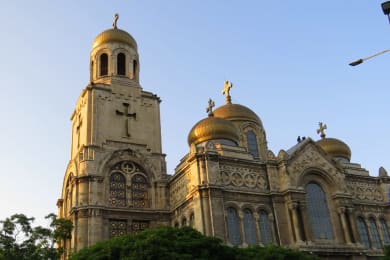
Day 6
Varna – Nesebur UNESCO site – Stara Zagora – Kazanluk
After breakfast, we will visit continue south along the Black Sea coast to Nessebur town ( UNESCO site ). Visit the local archaeology museum and one of the medieval churches. According to Strabo, the town was named Messambria ( later altered to the Slavonic Nessebur ), after the legendary founder – a Thracian by the name of Melsa and the Thracian name for city “bria”. It exists since the 2nd millennium BC, the Hellenic colony on this site was founded in 510 BC by Dorian settlers. Having captured Messambria in 72 – 71 BC, the Romans preserved the city intact, leaving there a permanent garrison. During the Roman epoch, new temples dedicated to Demeter, Asclepiad, Hecate, Isis, etc. were erected. On the northern shore of the peninsula rose the Temple of Zeus. At the big local theatre, drama, music performances, and poetry readings were arranged. Since the 4th c AD, Messambria maintained close links with Constantinople, during the 7th c it became one of the “special” locations where out of favor politicians and courtiers were exiled from Constantinople. Stop in Stara Zagora to visit the Neolithic Dwellings museum ( the best preserved in Europe ) and the central part of the town with the Roman forum. Continue to Kazanluk – the center of the Valley of Roses, known as well as the Valley of the Thracian kings. The Thracian tribes are the first mentioned in Homer’s Iliad and Odyssey. He described them as brave warriors and excellent seafarers, allies of the Troyans in their war against the Achaeans. Dinner at the hotel and overnight
Meals: Breakfast, Dinner
Accommodation:
- Mid-Range Accommodation: 4* Hotel
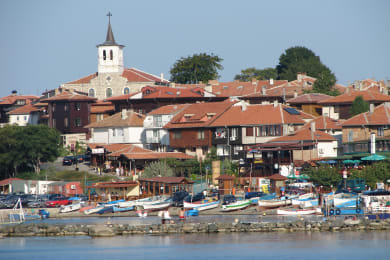
Day 7
Kazanluk – Plovdiv
Morning visit to the regional museum of Kazanluk, which will give you an overview of the many discoveries in the Valley of the Thracian kings. With the 1500 and over Thracian mounds the Kazanluk Valley has every reason to be called the Valley of the Thracian Kings. Of these 14 are in the proximity of the town of Kazanluk and some are cultural monuments of world importance, dating from 5th-3rd c BC. Visit Kazanluk Thracian Tomb ( UNESCO site, copy ) and proceed to the suburbs of Kazanluk to visit: Ostrusha Thracian tomb and Goliama Kosmatka ( Set 3rd ). Stop to a rose and lavender distillery complex and taste some rose products. Continue to Plovdiv - the 2nd largest city in Bulgaria, once the capital city of Philip the 2nd of Macedonia, the father of Alexander the Great. The city is contemporary of Troy and is much older than Athens and Rome. Daily Telegraph in its research “the World`s Oldest 20 continually-inhabited cities” declared Plovdiv the oldest continually-inhabited city in Europe and the 6th oldest in the world. Plovdiv was the European Capital of Culture in 2019. Overnight in Plovdiv.
Meals: Breakfast, Dinner
Accommodation:
- Mid-Range Accommodation: 4* Hotel
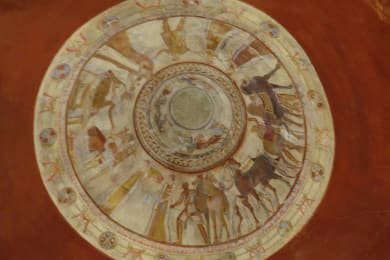
Day 8
Plovdiv – Perperikon – Tatul – Plovdiv
Morning departure south, entering the Eastern Rhodope mountains. Our first stop will be the Ancient Thracian rock city Perperikon. Perperikon is the largest megalith ensemble site in the Balkans and is unique in archaeological, historical, natural, and multi-religious aspects. We will proceed to the Thracian sanctuary near Tatul Village. The complex comprises two sarcophagi, a rectangular bed for the main altar, and a three-meter-deep well. It dates back to the end of the 5th and the beginning of the 4th centuries BC. The rock pyramid and the tombs surrounding it were built in the 13th - 11th centuries BC when the sanctuary reached its first zenith. According to historians the sarcophagus, the truncated pyramid, and the side chamber illustrate the funerals of Orpheus and King Rhesus of Thrace, who according to myths reigned in the southern part of the Rhodopes and fought in the legendary Trojan War. Return to Plovdiv for 2nd night.
Meals: Breakfast, Dinner
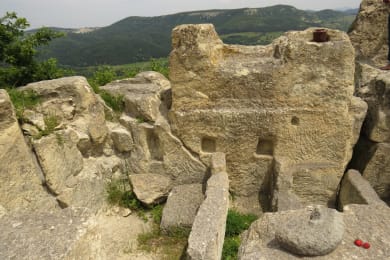
Day 9
Plovdiv – Sofia
Morning dedicated to the Old Plovdiv architectural reserve with the Ancient Theatre, the complex of National revival houses, and St. Constantine and Helena Church. We will walk along the longest pedestrian street in the world, with Djumaya Mosque ( 14th c ), the Roman Stadium, Forum, and a visit to Trakart exhibit of Roman Mosaics. Possible free time in Kapana – the artistic neighborhood of Plovdiv, before we return back to Sofia. Check-in at the hotel and rest. Farewell dinner, overnight.
Meals: Breakfast, Dinner
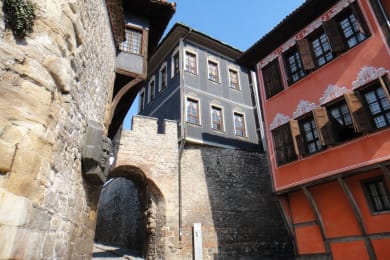
Day 10
Sofia
Free time and private transfer to the airport.
Meals: Breakfast
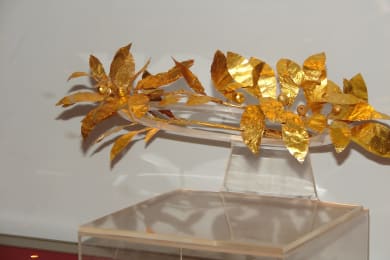
What’s Included
Accommodation
- 4* Hotel
- 4* hotel
Meals
- Dinner (8)
- Breakfast (8)
- Lunch (1)
Transport
- Airport Pick Up Sofia
- Sofia to Veliko Turnovo in Private car/ minibus
- Veliko Turnovo to Varna in Private car/ minibus
- Varna to Kazanluk in Private car/ minibus
- Kazanluk to Plovdiv in Private car/ minibus
- Plovdiv to Sofia in Private car/ minibus
- Airport drop off Sofia
Activities
- Walk Veliko Turnovo, Medieval capital city of Bulgaria, located on 4 hills and the Citadel
- Visit Plovdiv, the oldest continuously inhibited city in Europe
- Visit Sveshrati Thracian tomb, Old Nessebur, Kazanluk Thracian tomb ( copy ), Rila Monastery
- See the oldest golden objects discovered on the Earth
- View the largest Megalith complex on the Balkans
- Visit The Valley of Roses, Black Sea coast, the unspoilt nature of the Balkan mountains
- Enjoy traditional Bulgarian dishes, local wines and folklore
- 1 wine tasting in Veliko Turnovo
- Tasting of rose products near Kazanluk
Extras
- Entrance to sites included
Not Included
- Meals not specified as included
- International Flights
- Tips for Guides and Drivers
About Maya
TEAM LEAD

Baboo Certified
5 (3 reviews)
Hiking
Visit markets
Meet local people
Rural home stays
Indigenous culture
Yoga
Meditation
Wellness retreat
Detox
Nature & Wildlife
Food & Culinary
Water & Coastline
Born and raised in Sofia, capital of Bulgaria, I’ve always had a passion for travel and adventure. Ever since I graduated with a Master’s degree in Cultural Tourism, I’ve been planning tours in Bulgaria and the Balkan region.
Travel that Makes a Difference
By choosing to travel with us, you support local communities, wildlife, and the environment. We are dedicated to positively impacting the world through every journey we offer.

Let’s regenerate the planet together
We overcompensate your entire journey’s carbon footprint including flights - for free.
$2,258.00 USD